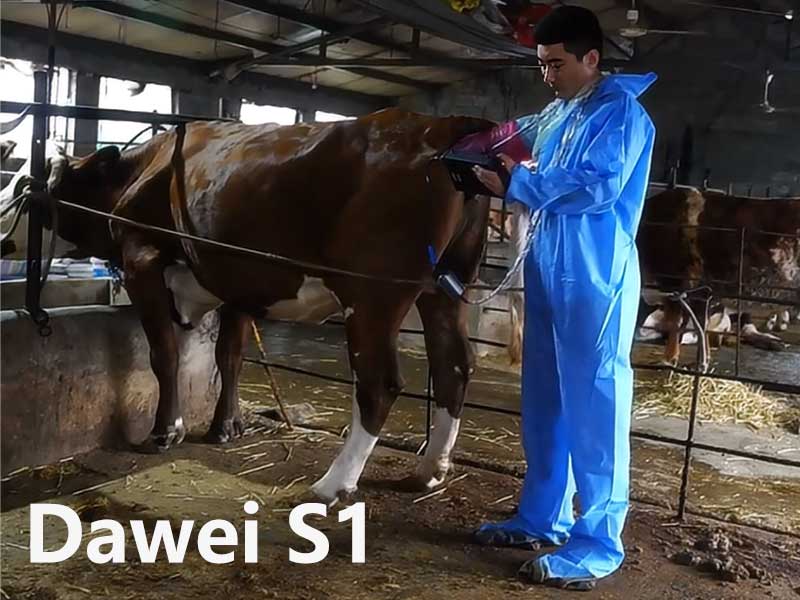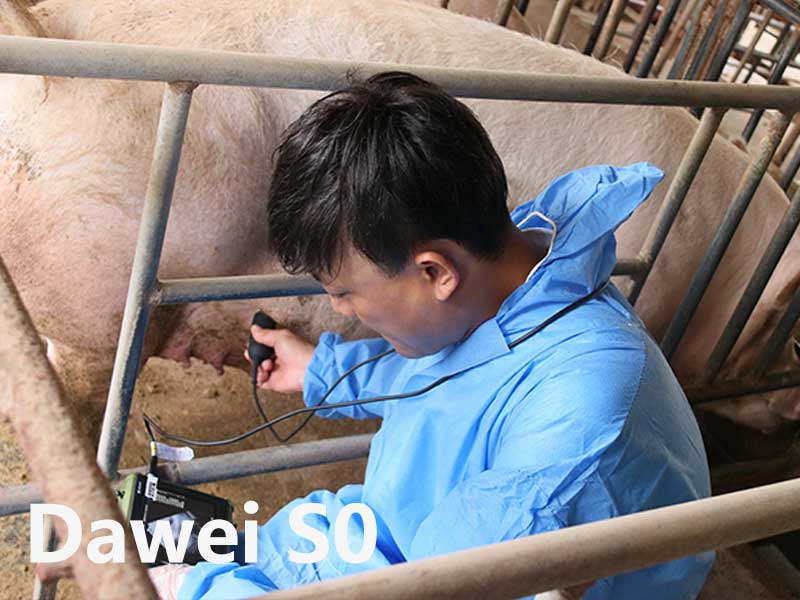Application of Livestock Ultrasound Equipment in Cattle Management
The advent of livestock ultrasound equipment has significantly promoted and accelerated research capabilities in the fields of bovine reproductive physiology and live animal carcass assessment. The application of ultrasound in bovine reproductive studies has deepened our understanding of ovarian physiology, early embryonic development, follicle wave dynamics, and reproductive disorders. Livestock ultrasound equipment has been widely used to develop controlled breeding programs involving estrus synchronization and ovulation synchronization to achieve effective timed artificial insemination.
Practical applications of ultrasound in cattle reproduction include ovarian imaging as a diagnostic aid, examination and confirmation of ovarian cysts, early pregnancy detection, fetal sex determination, and twin identification. More specialized reproductive applications include follicular oocyte aspiration (ovum pickup) and follicle ablation. Live animal carcass assessment is another important research field. Recent advances in carcass image interpretation software allow highly accurate estimation of ribeye area, back fat, intramuscular fat percentage, and rump fat. Measurements from livestock ultrasound equipment are used to collect data for genetic evaluation of breeding and feedlot cattle, moving away from progeny testing based on actual carcass data collection to highly accurate assessment of bulls at a younger age.
Several breed associations are currently using ultrasound data to estimate carcass EPD (Expected Progeny Differences). Research has shown that livestock ultrasound equipment can effectively sort cattle in feedlots to optimize sorting and finishing before slaughter. The future of carcass ultrasound includes continuous updates to current software system models and algorithms, development of automated software packages, and potential uses in identifying factors that determine tenderness. In the near future, the practical application of livestock ultrasound equipment in the beef industry will become commonplace. The data generated will positively impact breeding efficiency and carcass quality.
Development and Application of Livestock Ultrasound Equipment in Pig Farming
The application of livestock ultrasound equipment in pigs mainly focuses on backfat, eye muscle, and reproductive status assessment. As early as 22 days after the first breeding of sows, livestock ultrasound equipment can accurately detect the pregnancy status of sows. Future research in composition, muscle quality, and reproductive biology, as well as enhanced imaging capabilities, will lead to new innovative applications.
Livestock ultrasound equipment not only aids in early pregnancy detection but also helps pig farm managers better understand and manage the health and reproductive status of pigs. The precise measurements and real-time imaging capabilities of these devices enable breeders to better select and manage breeding pigs, improving the overall productivity and economic efficiency of pig farms.
Application of Livestock Ultrasound Equipment in Poultry Reproductive Status Assessment
For many years, ultrasound equipment has been used to assess the reproductive status of humans and other mammals. In poultry, the main reproductive organs of both sexes are completely internalized, making it difficult to visually assess reproductive status. Additionally, due to the relatively low value of each hen or rooster in integrated production and management systems, there has been little effort to evaluate the reproductive performance of individuals, leading to flock management programs.
In the past few decades, genetic resources used to develop breeding parents have been integrated into a limited number of elite lines owned by only a few companies. These companies use strict selection, typically retaining only the top 0.1% to 10%, to produce elite “purebred” breeding stock. These elite breeders are then used to produce great-grandparent populations for breeding offspring. Due to the potential reproductive capacity of poultry, purebred males and females ultimately produce millions of pounds of products. Livestock ultrasound equipment has been used to assess reproductive potential, primarily in hens, broiler breeders, and layer breeders. Results indicate that ultrasound can be used as a tool to select individuals with well-formed, normal follicle hierarchies or testicular development in males.
The potential for applying livestock ultrasound equipment in domesticated or threatened bird species is enormous and warrants further evaluation. As technology continues to advance, livestock ultrasound equipment will increasingly be applied in the poultry industry, providing strong support for improving reproductive efficiency and production quality.
In summary, livestock ultrasound equipment plays an increasingly important role in managing different types of livestock. Whether for cattle, pigs, or poultry, the application of ultrasound technology continues to drive progress in livestock reproduction and health management. With ongoing technological updates and expanding applications, livestock ultrasound equipment will play an even greater role in future agricultural production.
Post time: Jun-11-2024





